Hybrid athletes—those combining endurance and strength training—face unique recovery challenges. Balancing long runs, interval sessions, strength workouts, and functional movements demands a robust recovery plan. Neglecting recovery can lead to overtraining, injury, and plateaued gains. In this comprehensive guide, we cover advanced, science-backed recovery strategies to help you train harder, bounce back faster, and unlock new performance levels.
The Science of Recovery for Hybrid Athletes
Hybrid training places high metabolic and mechanical stress on your body. Recovery isn’t just “rest” — it’s an active, multi-faceted process involving:
- Muscle repair & growth (protein synthesis)
- Central nervous system (CNS) restoration
- Hormonal balance (cortisol regulation, testosterone, growth hormone)
- Glycogen replenishment
- Inflammation control
Failing any element can compromise both endurance gains and strength adaptations. Let’s dive into each advanced strategy.
Prioritize Sleep Quality & Quantity
Why Sleep Matters
- Muscle protein synthesis peaks during deep sleep.
- CNS recovery occurs primarily in REM sleep.
- Hormonal regulation: Growth hormone surges in early sleep cycles.
Advanced Sleep Strategies
- Consistent Sleep Schedule
- Aim for 7–9 hours nightly, going to bed and waking up at the same times.
- Optimize Sleep Environment
- Cool room (16–18 °C), blackout curtains, white-noise/mask if needed.
- Pre-Bed Wind-Down Routine
- Limit screens 60 min before bed.
- Try 5–10 min of guided meditation or diaphragmatic breathing.
- Strategic Napping
- 20–30 min power naps can boost alertness without disrupting nighttime sleep.

Nutrition & Supplementation for Recovery
Macronutrient Timing
- Protein: 0.3–0.4 g/kg body weight within 45 min post-workout.
- Carbohydrates: 1.0–1.2 g/kg within 45 min post-exercise to optimize glycogen resynthesis.
- Fats: Moderate intake; avoid high-fat meals immediately after post-workout to not delay glycogen replenishment.
Key Micronutrients & Supplements
- Vitamin D & Calcium for bone health.
- Magnesium for muscle relaxation and sleep support.
- Omega-3 fatty acids to modulate inflammation and support joint health.
- Branched-Chain Amino Acids (BCAAs) or Essential Amino Acids (EAAs) for additional anti-catabolic support.
- Creatine Monohydrate to support strength recovery and ATP resynthesis.
- Collagen peptides plus Vitamin C for connective tissue repair.
🔍 Read more in our Nutrition Articles for hybrid athletes.

Active Recovery & Low-Intensity Modalities
Active recovery enhances blood flow, accelerates metabolite clearance, and reduces soreness.
Effective Modalities
- Low-Intensity Steady State (LISS): 20–30 min walk, easy bike, or swim at <60% max heart rate.
- Contrast Hydrotherapy: Alternating hot (3 min) and cold (1 min) water immersion for 3–5 cycles to boost circulation.
- Compression Therapy: Graduated compression boots or garments post-workout.
- Light Mobility Flows: Dynamic hip openers, shoulder circles, and controlled articular rotations.
- Ice Bath
Mobility, Flexibility & Soft Tissue Work
Daily Mobility Routine
- Hip Flexor & Thoracic Spine Focus
- Ankle Dorsiflexion & Shoulder External Rotation
Soft Tissue Techniques
- Foam Rolling: Quad, IT band, calves, lats (1–2 min per area).
- Percussive Massage: 10–20 sec per muscle bundle to improve fascial glide.
- Trigger-Point Therapy: Use lacrosse ball on glutes, pecs, and shoulders.
Periodization & Deload Weeks
Structured Deloading
Scheduled deload weeks every 4–6 weeks to reduce volume by 30–50% while maintaining intensity. Benefits include:
- Restored hormonal balance
- CNS recovery
- Breaks in repetitive stress to joints and tendons
Auto-Regulated Deloads
Listen to your body—if motivation, appetite, sleep quality, or performance dips, implement a deload early.
Monitoring Recovery Metrics
Wearables & Data
- Heart Rate Variability (HRV): Daily morning readings to assess autonomic balance.
- Resting Heart Rate (RHR): Monitor for 3–5 bpm elevation, which can signal fatigue.
- Sleep Tracking: Use devices/apps to ensure deep and REM sleep proportions.
Subjective Scales
- Rate of Perceived Exertion (RPE) on waking and during workouts.
- Muscle Soreness Scale: 1–10 rating to guide session intensity.
Psychological Recovery & Stress Management
Mental fatigue can be as draining as physical stress. Incorporate:
- Mindfulness & Meditation: 5–10 min daily to lower cortisol.
- Breathwork: Box breathing or 4-7-8 technique pre-sleep or post-workout.
- Active Hobbies: Light yoga, walking in nature, reading, or journaling.
Technology & Recovery Tools
- Infrared Sauna – Promotes circulation, reduces muscle soreness, and supports relaxation and detoxification.
- Ice Baths / Cold Water Immersion – Reduces inflammation and muscle soreness; accelerates recovery from high-intensity training.
- Contrast Therapy (Hot-Cold Showers or Baths) – Enhances blood flow and promotes faster healing by alternating vasodilation and vasoconstriction.
- NormaTec / Pneumatic Compression Boots – Stimulates venous return and lymphatic drainage, ideal for post-leg day recovery.
- Percussive Massage Devices (e.g., Theragun, Hypervolt) – Breaks up muscle tension, reduces stiffness, and increases circulation in targeted areas.
- Electric Muscle Stimulation (EMS) – Activates muscle fibers without joint stress; ideal for recovery of glutes, hamstrings, and quads.
- TENS Units (Transcutaneous Electrical Nerve Stimulation) – Helps manage localized pain and promote blood flow.
- Foam Rollers & Vibrating Rollers – Improve mobility and relieve trigger points through self-myofascial release.
- Massage Guns with Heat or Cold Attachments – Combine percussion with temperature therapy for dual benefit.
- Sleep Tracking Devices (e.g., WHOOP, Oura Ring) – Monitor recovery readiness, HRV, and sleep stages to optimize training load.
- Red Light Therapy Panels – Supports tissue healing, reduces inflammation, and may enhance mitochondrial function.
- Compression Garments (e.g., tights, sleeves) – Supports recovery by improving circulation and reducing muscle oscillation.
- Breath Training Devices (e.g., PowerLung, Airofit) – Assist in respiratory recovery and help reduce breathlessness post-effort.
- Hydrotherapy Pools or Underwater Treadmills – Low-impact active recovery with resistance; ideal for joint recovery.
- Cryotherapy Chambers – Rapid cold exposure to reduce systemic inflammation and boost endorphins.
- Inversion Tables – Help decompress the spine and promote blood flow to lower extremities.
- Recovery Boots with Integrated Heating – Combine heat and compression for deep muscle recovery.
- Smart Recovery Apps – Guide routines and track muscle fatigue levels for optimized rest strategies.

Sample Recovery Week for Hybrid Athletes
| Day | AM Session | PM Session | Recovery Focus |
|---|---|---|---|
| Monday | Easy 8 km run @ <65% MHR | 20 min foam rolling & mobility | Aerobic recovery |
| Tuesday | Strength moderate load (60% 1RM) | Contrast hydrotherapy | CNS (Central Nervous System) & circulation |
| Wednesday | Active recovery: swim or bike 30 min | Guided yoga flow | Mobility & relaxation |
| Thursday | Interval run – 6×400 m @ 90% MHR (Maximum Heart Rate) | Percussive massage | Metabolite clearance |
| Friday | Heavy strength (85% 1RM) | Compression boots 20 min | Joint & muscle relief |
| Saturday | LISS (Low-Intensity Steady-State) hike + bodyweight mobility | Meditation & breathwork | Stress reduction |
| Sunday | Full deload: light stretching | Sleep extension if needed | CNS & hormonal reset |
📈 Track your recovery metrics in our HYROX Training Plans templates.
Conclusion
Recovery is the cornerstone of sustainable progress for hybrid athletes. By integrating advanced sleep strategies, targeted nutrition, active recovery, mobility work, and data-driven monitoring, you’ll not only prevent burnout but also maximize your performance in both endurance and strength domains.
Ready to optimize your recovery and training? Explore our HYROX Training Plans and leverage expert coaching, customizable templates, and ongoing support to elevate your hybrid athlete journey.

